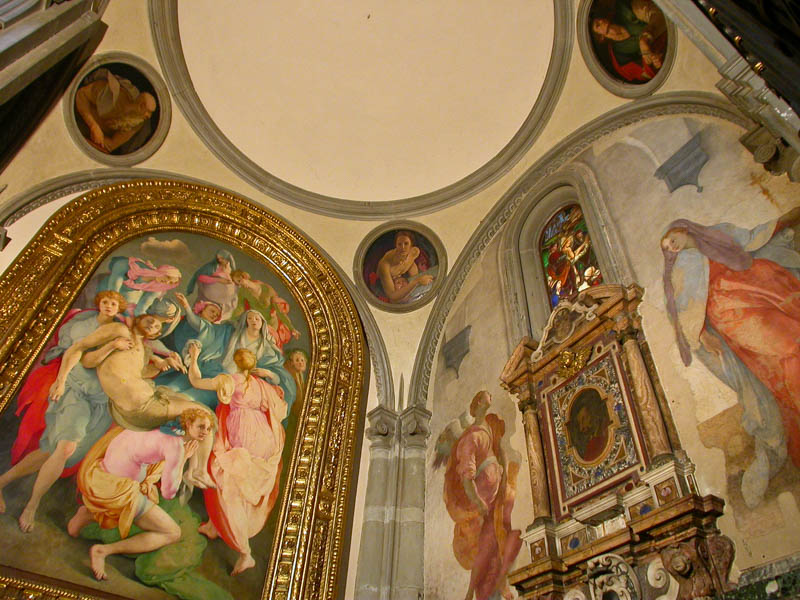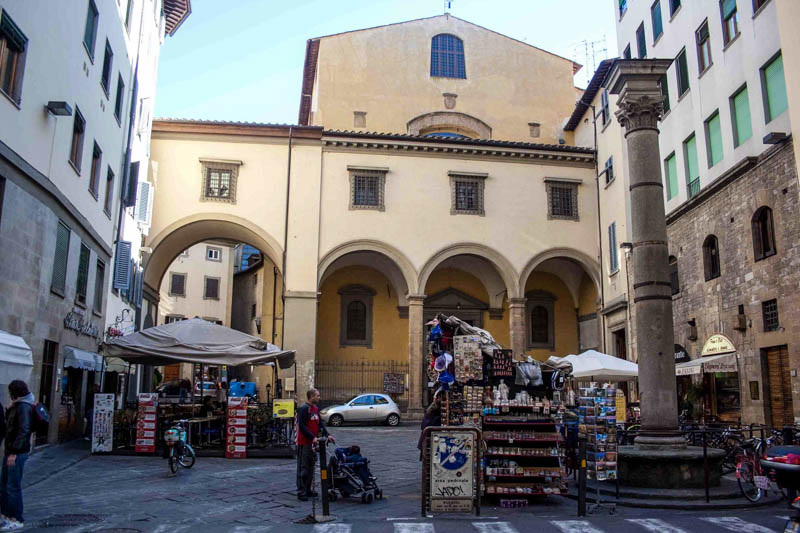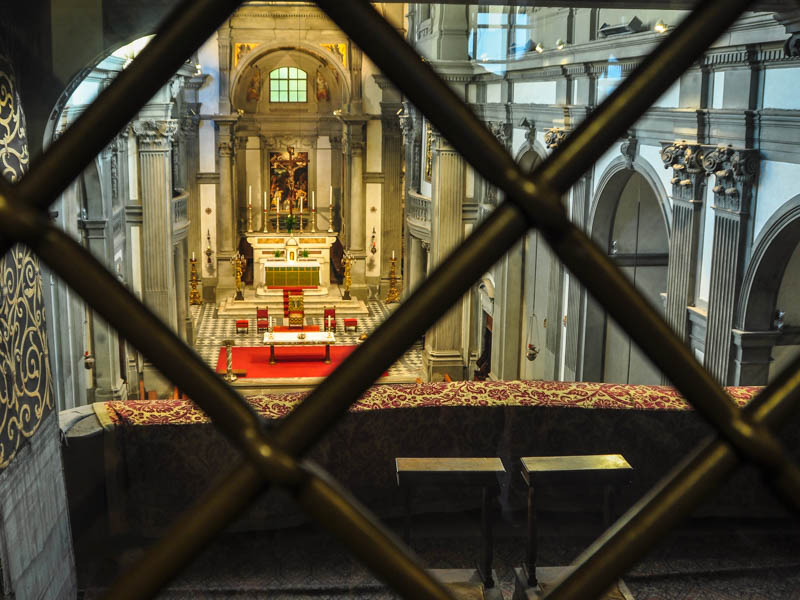

The 2nd-century Syrian Greek sailors who lived in this neighborhood brought Christianity to Florence with them, and this little church—dedicated to Roman martyr St. Felicity—was probably the second to be established in the city (after San Lorenzo).
The first edition of the church was built in the late 4th century—the granite column on the pocket piazza out front that looks vaguely like it belongs to a Roman ruin was actually placed there in 1381 to mark the site of Florence's first Chrsitian cemetery (later excavatiosn discovered a tomb dated AD 405).
The current version of Santa Felícita was rebuilt in the 1730s, but its star attractions are from the 16th century Mannerist era.
The best are in the first chapel on your right, the Cappella Capponi: Paintings by Mannerist master Pontormo (1525–27).
Pomtormo's The Deposition (or Descent from the Cross) and frescoed Annunciation are rife with his garish color palette of oranges, pinks, golds, lime greens, and sky blues.

The four round paintings of the Evangelists surrounding the dome are also by Pontormo, except for the St. Mark (with the angel), which was probably painted by his pupil Bronzino.
There are also works by Ridolfo Ghirlandaio, Santi di Tito (the Adoration of the Shepherds on the High Altar—though this might be by Francesco Brina) and a 19th century Matryrdom of the Maccabei Brothers by Antonio Ciseri on the fourth altar on the right.
Th best, perhaps, is the Gothic Madonna with Child and Saints in the Sacristy by 14th century master Taddeo Gaddi.
The best view of the church is the peek-a-boo glimpse you get from Cosimo I's private balcony—like a operatic box seat so the Grand Duke and his family could attend Mass without mixing with the masses—but you only get that when you tour the Vasari Corridor, which cuts right across the facade en route from the Uffizi to the Pitti Pelace.
Daily 8am–noon and 3:30–6:30pm
Free admission
Bus: C3, D
Hop-on/hop-off: Frescobaldi (A)
Planning your day: Give it about 15 minutes to peruse the paintings.
Share this page
Search ReidsItaly.com
Piazza Santa Felícita (2nd left off Via Guicciardini across the Ponte Vecchio)
tel. +39-055-213-018
www.santafelicita.com
Daily 8am–noon and 3:30–6:30pm
Free admission
Bus: C3, D
Hop-on/hop-off: Frescobaldi (A)